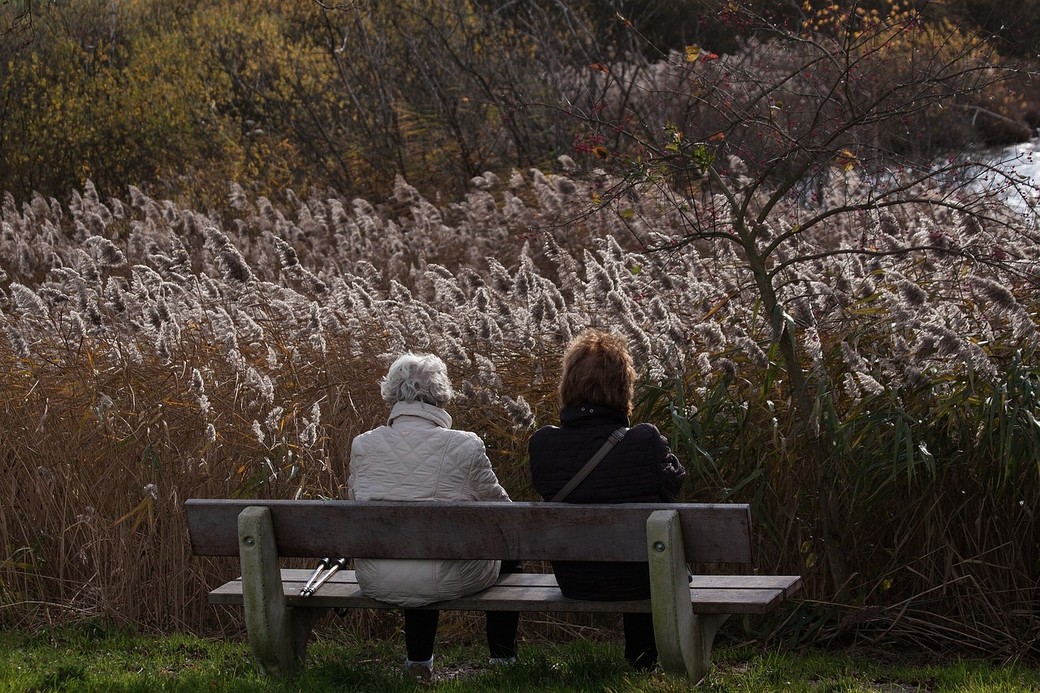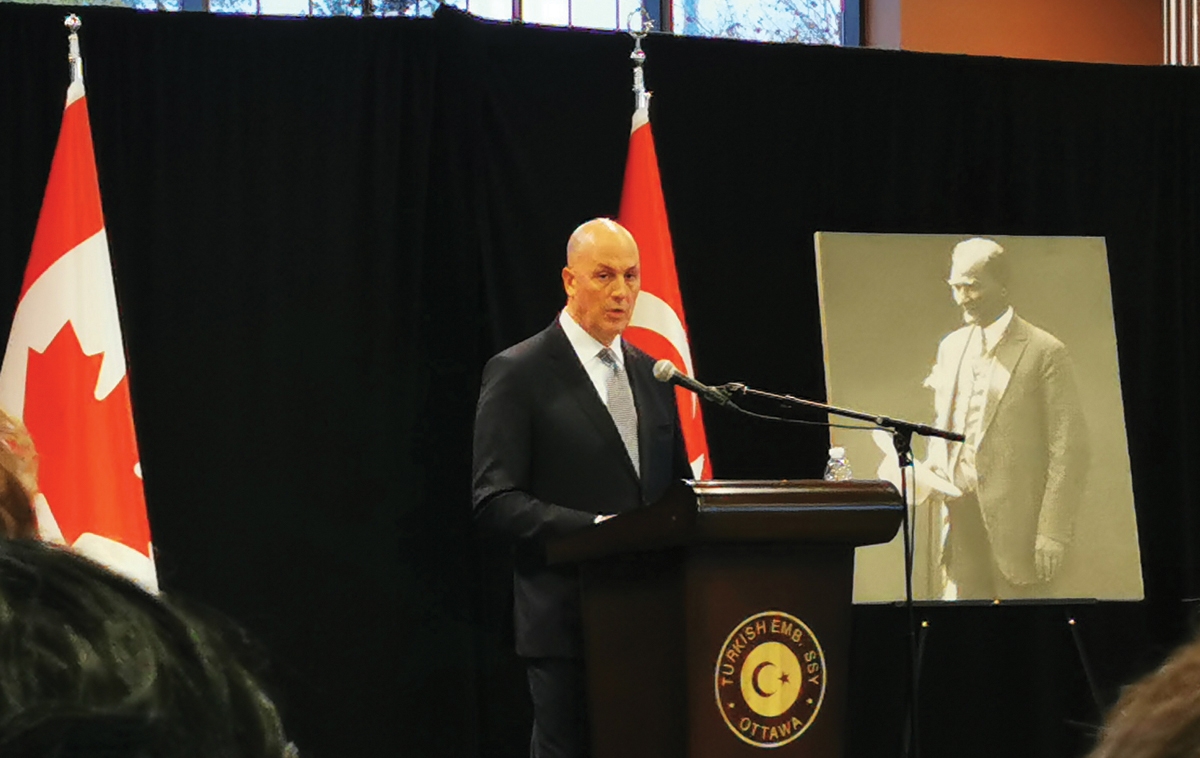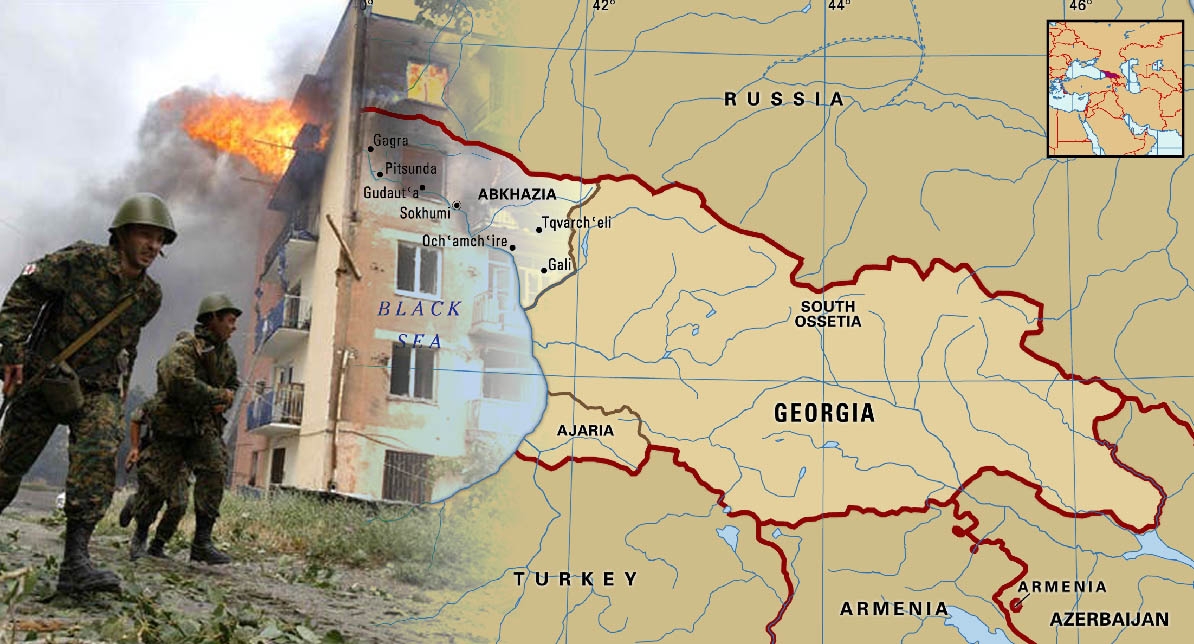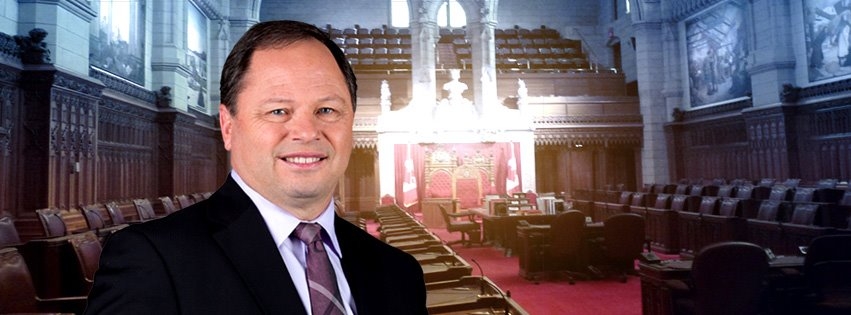
The Last Chapter: Death on Your Own Terms
A Supreme Court judgment now permits some Canadians to approach death on their own terms. Who should those Canadians be?
An essay by Catherine Frazee
For some of us, the book of life will close abruptly. A sudden pop or crunch or snap, and we’ll be gone. Perhaps some body part or system will betray us, utterly and fatally, in an otherwise banal moment of the day or night. Or perhaps some force of nature or violent strike will pluck us out of existence. There’s no telling. Either way, the outcome will be immediate and uncontrolled. We’ll be dead, and we won’t have planned for it. With any luck, our affairs will be in order and our relationships in good array. And that will be that.
But for many of us, there will be fair warning. Death will announce its approach. Either by diagnosis or by actuarial calculation, or more likely both, we will see the handwriting on the wall.
Then we will have to choose how to write our final chapter.
Canadians who know they are entering the last act of life now have the opportunity to meet death on their own terms. If we match the criteria detailed in the Supreme Court’s decision in the Carter case, we’ll be entitled, if we wish, to choose where, when, and in whose company, we shall die. For many, this will be a source of great comfort, permitting them to cross the stage of life one final time, and when the moment is right, to turn, bow and exit.
Edward Hung called this “an orderly exit plan”. The “accompanied” suicide that he arranged for himself in 2014 involved a trip to Switzerland, but prior to that, a curtain call performance of My Way, posted on YouTube for loved ones – and posterity.
In an open letter published after his death, Hung acknowledged his “good fortune” to have the support and resources that made it possible for him “to approach death in the way I wanted”. An accomplished criminal lawyer with a keen sense of justice, he pleaded the case for law reform months before the Supreme Court would hear arguments in the landmark Carter appeal. “As a Canadian, I had no choice but to resort to Switzerland. … This is just not fair. Our Parliament should allow Canadians to have easy access to assistance for their demise and I hope it would come soon.”
Indeed it would come, in just over two years. As of June 6, access to that assistance is now available on home soil.
“The Legal Vacuum”
In the Supreme Court’s decision striking down the ban on euthanasia and assisted suicide, federal and provincial governments were given one year in which to develop an appropriate legislative and regulatory response. When a new federal government was sworn in last November, a four-month extension was granted by the Court, taking us to June 6. Expert panels and parliamentary committees at the federal level worked toward the development of the “complex regulatory regime” that the Court had indicated would be “better created by Parliament than by the courts”. In a dead heat finish, the June 6 deadline saw Bill C-14, the federal government’s proposed Criminal Code amendments to permit medically assisted death, caught in stalemate with passage in the House of Commons and Senators poised to defeat it altogether.
In what many have called a “legislative vacuum”, Canada has no statutory law with respect to euthanasia or assisted suicide, but both are permitted under the terms of the Court’s decision. This means that doctors are now exempt from prosecution when they take active steps to end the life of a consenting adult who meets the criteria specified by the Court. Specifically, those criteria are: being a competent adult, giving clear consent, having a “grievous and irremediable” medical condition and experiencing enduring and intolerable suffering as a result of that condition.
What exactly is a “grievous and irremediable condition”? The Court gave no guidance about this, except to make it clear that “irremediable” does not require a person to undergo treatments that are unacceptable to them. Otherwise, it will be up to our doctors to decide who is eligible, and up to our provincial or territorial colleges of physicians and surgeons to oversee those decisions.
For better or for worse, this means there will be no consistent approach across the country, no requirement for reporting on assisted deaths, and no legal safeguards to protect vulnerable people from harm.
For example, there will be no legal requirement to have a second physician involved, no need to have requests made formally in writing, and no necessity for any time delay between making a request and receiving an assisted death. Physicians will be permitted to end the lives not only of adult Canadians, but of “suicide tourists” who travel to Canada as Edward Hung traveled to Switzerland.
As constitutional lawyer Dianne Pothier has observed, “Although cautious, risk-averse doctors may be hesitant to act, determined doctors could proceed, confident of the absence of criminal liability.”
Most controversially, willing physicians will be legally permitted to prescribe and administer lethal medication not only to persons who are approaching death, but also to persons who would otherwise have many years of life ahead, including persons with non-life-threatening psychiatric illnesses such as post-traumatic stress and depression.
As with other self-regulating professions, doctors will have professional standards and guidelines to adhere to, but the fact remains that criminal sanctions for misconduct or abuse are unlikely, except in the most egregious of circumstances.

Bill C-14 and the merits of prudence
This does not appear to be what the Court intended. Decidedly, it is not what the federal government intended. Indeed, Bill C-14, Canada’s proposed new law to permit medical aid in dying, now on life support itself, would establish a nationally consistent, regulated approach to this new practice. The Bill includes a number of generally uncontroversial safeguards and regulatory features consistent with the “complex regulatory scheme” that the Court alluded to.
A fulsome articulation of the purpose of the legislation is detailed in the Bill’s preamble, highlighting the weighty policy goals that must be balanced in such a law. Individual autonomy must be respected, at the same time as vulnerable persons are protected from inducement to end their lives. The “inherent equal value of every person’s life” must in no way be compromised, and “negative perceptions of the quality of life of persons who are elderly, ill or disabled” must be discouraged. Suicide must be recognized as a “significant public health issue”. The fundamental principles of the Canada Health Act – public administration, comprehensiveness, universality, portability and accessibility – must be upheld. Non-legislative measures that support “a full range of options for end-of-life care” must be pursued. Perhaps most significantly, the preamble makes clear that “robust safeguards, reflecting the irrevocable nature of ending a life, are essential to prevent errors and abuse in the provision of medical assistance in dying”.
With these grand commitments as its backdrop, Bill C-14 would introduce a more restrictive definition of what constitutes a “grievous and irremediable condition” and by extension, determine who is and who is not eligible to receive an assisted death. The Bill’s definition specifies: having “a serious and incurable illness, disease or disability”; being “in an advanced state of irreversible decline in capability”; having enduring and intolerable suffering which is either physical or psychological; and being on a trajectory towards a “reasonably foreseeable” natural death.
These restrictions have been hotly contested in debates that still rage as Bill C-14 advances haltingly through the lawmaking process. It is safe to assume that court challenges to “push the envelope” and legal strategies to “hold the line” will be forthcoming whatever law, if any, is ultimately fashioned for Canada.
As our law now permits the taking of certain lives in certain circumstances, how shall we know that we are taking the “right” lives, in the “proper” manner? When the dust of parliamentary debate settles, who should be offered the choice of an assisted death, and who should not?
A New Choice, but for Whom?
About some persons, and some circumstances, there remains little debate. Dr. Donald Low, the highly respected Canadian microbiologist who died in September 2013 shortly after recording a heartfelt plea for changes in Canadian law, would now have qualified for an assisted death under Canada’s proposed law. His terminal brain tumor was “serious and incurable”; he was in an obvious state of advanced and irreversibly weakening capacity; and his death, which would come eight days after recording his video, was more than reasonably foreseeable. While he suffered no physical pain, he described a deep personal anguish about the losses that lay ahead as his condition progressed:
“I’m worried about how it’s going to end… What worries me is how I’m going to die. Am I going to end up being paralyzed, will I have to be carried from the bathroom to the bed? Am I going to have trouble swallowing? I won’t be able to take in food. Things like that, that’s what’s bothering me the most.”
The fact that Dr. Low’s articulation of intolerable suffering corresponds with uncanny precision to my own conditions of daily living as a disabled Canadian, while jarring, cannot undermine his claim to a medically assisted death. Suffering is subjective, even when its hold on us can be traced directly to social forces of stigma and prejudice. This has been one of the more difficult conundrums as Canadian disability rights champions grappled with the implications of the Court’s decision in Carter – how to accommodate a right of access for persons like Dr. Low without further entrenching the discriminatory habits of heart that devalue the lives of disabled citizens.
To accept that Dr. Low’s explicit recoiling from disability would constitute a reason to die was a difficult pill for disability rights communities in Canada to swallow. But contextualizing this criterion within the four-part definition of “grievous and irremediable” that Bill C-14 would establish, goes a considerable distance toward easing that discomfort. Coming to terms with disability, learning its ways and routes and rewards, takes imagination, support and most of all, time. But compassion demands that we accept and honour those who are dying for who they are, and when it is possible to do so without undue harm to others, that we permit them to write their last chapter themselves.
As Canadian physicians grapple with the meaning of “grievous and irremediable” in the months ahead, not every case will be as clear-cut as that of Dr. Low.
People like Ms. Taylor
Our deliberations in this regard must begin with the life and circumstances of a Canadian woman named Gloria Taylor. Ms. Taylor was the central figure in the Court’s factual framing and analysis in the Carter decision . Indeed, the Court’s final declaration is expressed directly in relation to the constitutional rights of “people like Ms. Taylor”.
Ms. Taylor had been diagnosed with ALS in 2009, and by the time of the trial in late 2011 her condition had deteriorated significantly. Her death, which came about in 2012 as a result of a severe infection, was reasonably foreseeable; her condition was indisputably serious and incurable and her irreversible decline in capability was fully apparent. Ms. Taylor’s suffering, to some extent like Dr. Low’s, was anticipatory:
“I live in apprehension that my death will be slow, difficult, unpleasant, painful, undignified and inconsistent with the values and principles I have tried to live by. … What I fear is a death that negates, as opposed to concludes, my life. I do not want to die slowly, piece by piece. I do not want to waste away unconscious in a hospital bed. I do not want to die wracked with pain.”
Ms. Taylor went to court seeking assurance that she would be permitted to receive a physician-assisted death when her suffering escalated to her personal “enough is enough” moment. The Court obliged, granting her a constitutional exemption. She was jubilant, and satisfied. She lived for four more months until dying of natural causes in October 2012.
Were she alive today, Gloria Taylor would be entitled to choose an assisted death. This was a difficult ruling for Canada’s disability rights communities to embrace. Ms. Taylor, after all, had drawn liberally from the rhetoric of devaluation and stigma in advancing her claim – equating severe disability with being “stripped of dignity and independence”. But the life that she lived as a disabled person modeled impressive levels of civic and community engagement. While she may have invoked all-too-familiar narratives of shame and misery, perhaps strategically to bolster her arguments, she did not move in the world with shame. Perhaps for this reason, there is little controversy, even now from disability sectors, for according the option of an assisted death to “people like Ms. Taylor”.
But who else should have the option of assisted death?
Kay Carter was an 89-year-old resident of a North Vancouver nursing home who pursued an assisted death in Switzerland. Ms. Carter had spinal stenosis, a progressive condition that caused debilitating compression of her spinal cord. Ms. Carter’s death occurred in 2010, nearly 2 years prior to the trial court hearing that bears her daughter’s name.
Because Kay Carter was not a plaintiff in the case as Gloria Taylor was, the Court made no finding about whether she was indeed one of the “people like Ms. Taylor” who should have access to assisted death. Ms. Carter’s condition had deteriorated to the point of “extremely limited mobility and… chronic pain.” Accordingly, it would certainly appear that Ms. Carter had a serious medical condition, coupled with an advanced state of decline. But would she have met Bill C-14’s criterion of a reasonably foreseeable natural death?
Those who oppose the new Bill’s four-point definition of grievous and irremediable condition, including Ms. Carter’s daughter and son, insist that she would not, and therefore the Bill must be amended to expand the criteria to allow access for persons whose natural death is more remote.
Those who support the current drafting of these eligibility requirements, including Canada’s Ministers of Justice and Health, assert that Ms. Carter would have qualified. They explain that the framing of ‘a reasonably foreseeable natural death’ takes into account the whole person’s medical status in ways that jurisdictions like Oregon and other US states – where the law requires that persons have a “terminal disease” – do not.
Without medical evidence, Ms. Carter’s eligibility for assisted death cannot be known. But the intensity of these debates underscores the question of whether too many people whose suffering would be brought to an end by an assisted death would be excluded by Bill C-14.
Those who support the Bill, including Canada’s disability rights and palliative care communities, say that it is a necessary restriction that recognizes the public health goals of effective suicide prevention. Assisted death cannot be the remedy for all human suffering. If its eligibility were to extend to persons who would otherwise live for many years, how do we ensure that the youth of Attawapiskat, for example, or traumatized Canadian veterans returning from war, are protected? No doubt the more than 4000 suicides each year in Canada ended the life of someone with enduring and intolerable suffering. But not all were “people like Ms. Taylor” whose death was foreseeable. Maintaining the criteria of ‘a reasonably foreseeable natural death’ preserves the coherence of suicide prevention.
Canada’s proposed law would serve the needs of persons who are desperately ill and on a clear trajectory toward death. As the Minister of Justice acknowledged on May 13 when she rose in the House of Commons to speak to Bill C-14,
“At the same time that Bill C-14 permits access to the majority of those who would want it, it would not allow any and all Canadians to access it. It limits access in accordance with the legislative objectives that are stated in the preamble of the Bill.”
For Canada, there will be difficult cases ahead. Indeed, in Québec, where euthanasia for persons suffering intolerably at the end of their lives has been available for several months, there have already been hard cases at the eligibility margins..
Consider, for example, Louise LaPlante’s last chapter. According to the testimony of her daughter, Léa Simard, before the Senate Standing Committee on Legal and Constitutional Affairs, Mme. LaPlante deliberately starved herself to death after being refused medical assistance to die because, although she had multiple sclerosis, she did not meet the “end-of-life” requirement for this assistance under Québec law. Her case is not unique; other Québec citizens like Jean Brault pursued starvation until reaching a point of no return, whereupon physicians relented, because “natural” death had become imminent.
When her daughter was invited to elaborate on Mme. LaPlante’s experience, important details emerged. We learned that Mme. LaPlante was a fiercely independent woman, strong and solitary. After a serious decline resulting from injuries sustained in a fall, her home care arrangements became inadequate.
“The situation was getting worse and worse. … “So much so, that she felt very insecure at night.… She would be 12 hours without care and her situation had become impossible. We met with a social worker to try to get an intermediate resource, but that didn’t work”.
Admission into a long-term care facility was arranged. According to her daughter, this was the “turning point” for Mme. LaPlante.
“For her, that would have been hell. At 66 years, to be with people who were on average 85 years old, completely “gone”, if you will – atrocious conditions for someone who was solitary and independent.… She was a vegetarian and… there were menus that would have completely not met her needs… [There were also] very brusque ways of offering care… Essentially, it was hell, and that’s exactly what pushed her to make that decision… What other solutions did she have… Her only option was to let herself die of hunger.”
In 2003, Harriet McBride Johnson, one of modern America’s great writers from the culture of disability, coined the phrase “The Disability Gulag” to conjure the fortress of despair that felled Mme. LaPlante. It is the “destination” from which many final chapters have been and continue to be written, whenever frailty and social circumstance combine as they did for her.
As long as her home support arrangements were adequate, it appears that Mme. LaPlante had coped with the difficult progressions of her illness, holding fast to her identity as a strong and independent woman. But being uprooted from her home and delivered into a strange and alienating environment seems to have robbed her of all resilience, and may have rendered her highly vulnerable to any inducement toward assisted death.
Those who have experienced the “Disability Gulag” are quick to recognize how despair takes hold in such places. Rhonda Wiebe, speaking on behalf of the Council of Canadians with Disabilities, describes the “very subtle ways in which that chiseling away of the essence of who you are occurs”.
Should Mme. LaPlante’s final chapter have been written differently? Should she have been offered choices other than starvation? To these questions, we would all would surely answer yes.
But should those choices have included an assisted death? In the answers to this question, we confront the divide between those who advocate for unrestricted access to assisted death – whose response is plain and simply, yes – and those who support our new law, whose response is far more equivocal. For in circumstances such as those described for Mme. LaPlante, we can appreciate the devastating impact of being forced into institutional care and enduring overwhelming losses to one’s sense of place in the world. At such times of crisis, when grief and despair can easily take hold, disability groups and other supporters of the proposed law argue that the very offer of an assisted death is in and of itself, an inducement toward suicide.
In establishing that “persons like Ms. Taylor” should have access to a doctor’s assistance to end their life, the Supreme Court stated clearly that persons who are vulnerable to “being induced to commit suicide at a time of weakness” must be protected from such inducement. On the face of it, the question that Mme. LaPlante’s final chapter leaves us with is perhaps not whether she was a person “like Ms. Taylor”, but whether she was a vulnerable person caught at a time of weakness in a web of inducement.
The dynamics of inducement are at the heart of disability rights groups’ urgent calls for a cautious approach to medically assisted death. As disabled American author, Ben Mattlin observes,
“I know how thin and porous the border between coercion and free choice is, how easy it is for someone to inadvertently influence you to feel devalued and hopeless — to pressure you ever so slightly but decidedly into being “reasonable,” to unburdening others, to “letting go.”
Was Mme. LaPlante induced by the catastrophic failure of her home support arrangements to commit suicide at a time of weakness? Some will say it was possible, and others will say probable. We cannot know for certain of course, working back from a few passages of a mother’s life, filtered through her daughter’s memory.
But Bill C-14 would relieve us of the burden of making such determinations, drawing the line where natural death is reasonably foreseeable, and asserting that where it is not, we need to look elsewhere for measures that would alleviate a person’s enduring and intolerable suffering. If Mme. LaPlante’s natural death was not reasonably foreseeable, she would not qualify for assisted death. Her refusal of food and water would summon from us a host of other interventions from a host of other disciplines – social work, suicide prevention, rehabilitation science, psychology, spiritual care, and most importantly palliative care – that little-understood branch of medicine that specializes not in death, but in human suffering.
Human suffering is not like a toothache – specific, identifiable, extractable. Human suffering is a shape-shifter, a formidable ghost that enters our lives not always from the most “obvious” direction. Experts in palliative medicine understand this truth, and work in multidisciplinary teams to explore what Dr. Harvey Chochinov calls “the roots of suffering behind a request to hasten death”. It is work that takes great skill, and work that requires resources proportionate to the importance of lives like Mme. LaPlante’s that may hang in the balance.
Where natural death is not reasonably foreseeable, Bill C-14 asserts that the likelihood of inducement is too high, the risks of social harm too great. Our current legal framework expresses no such hesitation. Our elected parliamentarians chose the more cautious – some would say balanced – route, passing Bill C-14 on third reading. Time will tell whether our chamber of sober second thought, the Canadian Senate, will reach a similar conclusion.
Catherine Frazee, OC, D.Litt., LLD. (Hon.). Former member of the Federal External Panel on Options for a Legislative Response to Carter v. Canada. Professor Emerita, Ryerson University, School of Disability Studies.










